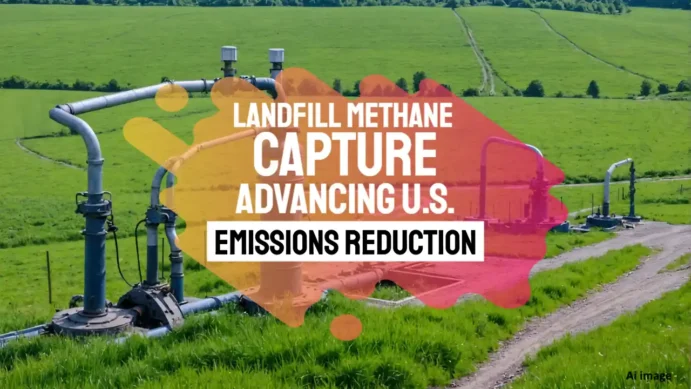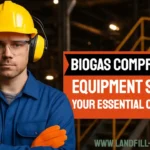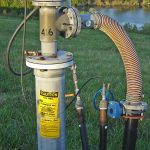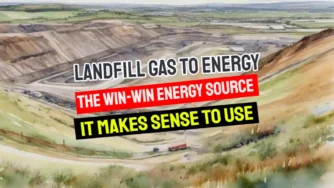Harnessing Landfill Gas: Progress and Challenges in U.S. Emissions Reduction Efforts
The management of landfill-derived gas represents one of the most significant opportunities in America's climate strategy. As a potent greenhouse gas with 28-36 times the warming potential of carbon dioxide over a 100-year period, methane demands urgent attention from policymakers, waste management professionals, and environmental scientists alike. This article examines the latest developments in landfill methane gas capture technology, regulatory frameworks, and industry growth, providing insights into how the United States is addressing this critical component of its emissions profile.
Current Emissions Landscape
According to the Environmental Protection Agency's “Draft Inventory of U.S. Greenhouse Gas Emissions and Sinks: 1990-2022,” landfills contribute approximately 17% of all U.S. methane emissions. In absolute terms, municipal solid waste (MSW) and industrial landfills generated 347 million metric tons of CO₂ equivalent in 2022 alone. This staggering figure highlights the scale of the challenge facing waste management authorities across the nation.
The silver lining in this data is that landfill gas (LFG) recovery systems successfully captured approximately 60% of these emissions in 2022. These systems represent a crucial technological intervention that transforms a potential environmental liability into a valuable energy resource.
Regulatory Framework and Administrative Action
The Biden-Harris Administration has prioritized methane emissions reduction as a cornerstone of its climate strategy. The U.S. Methane Emissions Reduction Action Plan specifically emphasizes two complementary approaches to landfill emissions:
- Eliminating food waste upstream through improved supply chain management, consumer education, and innovative preservation technologies
- Capturing and utilizing landfill-derived biogas as a renewable energy source
This dual approach acknowledges that while perfect waste diversion remains the ideal goal, practical solutions must also address existing landfill infrastructure and historic waste deposits that continue to generate methane.
The EPA, working through its Landfill Methane Outreach Program, provides technical assistance, partnership opportunities, and regulatory guidance to landfill operators seeking to implement gas capture systems. This program has been instrumental in accelerating the adoption of landfill gas methane emissions mitigation technologies across the country.
Industry Growth and Technological Advancement
The landfill gas sector of the biogas industry demonstrated remarkable growth in 2023:
- 573 operational landfill gas facilities were active by year's end
- 23 new facilities came online (a 4.2% increase), marking the strongest annual growth since 2014
- Overall biogas production capacity increased by 6.1%
- Capital investment in new LFG facilities grew by 5.9%
These statistics reveal an industry experiencing both technological maturation and expanding market opportunities. The growth coincides with declining overall landfill gas emissions, attributed primarily to reduced disposal of organic waste in landfills—suggesting that upstream waste diversion policies are working in tandem with improved capture technologies.
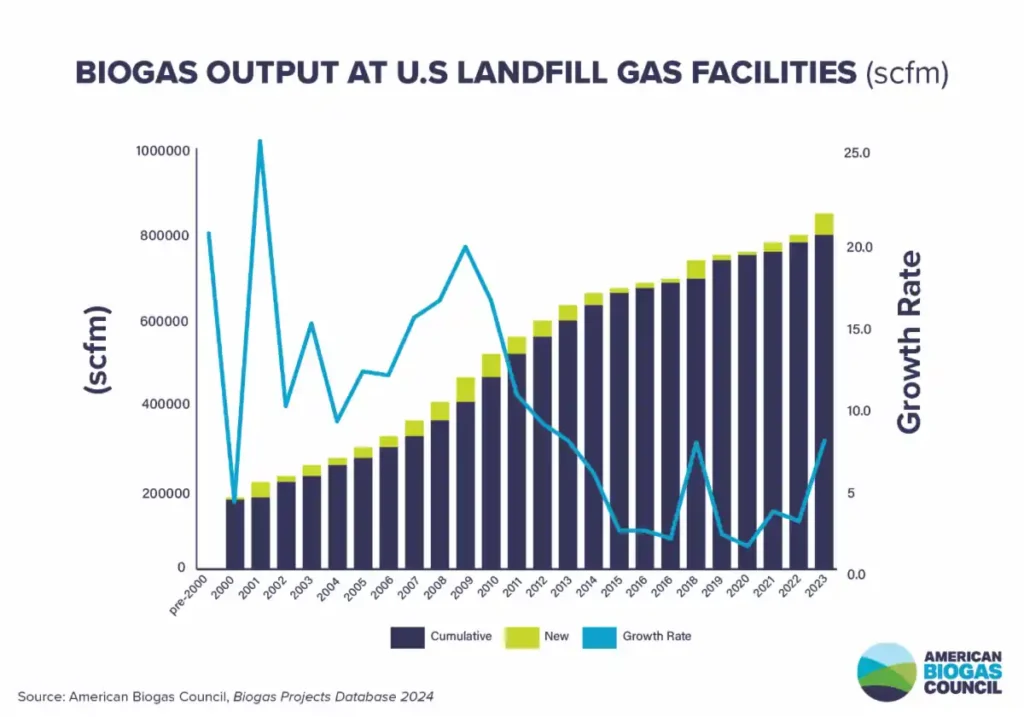
Quantification Challenges and Scientific Advances
Recent scientific publications, including a notable study in the journal Science, have brought renewed attention to landfill gas emissions. These studies utilize advanced remote sensing technologies and atmospheric monitoring to quantify emissions with unprecedented precision. While some questions remain about the specific conditions of landfills in these studies (such as whether they were closed or operational sites, or whether they employed LFG systems), the research underscores the importance of accurate emissions measurement.
Accurate quantification serves multiple critical functions:
- Identifying high-priority sites for remediation
- Verifying the effectiveness of existing capture systems
- Providing data for regulatory compliance
- Enabling carbon credit validation for landfill gas projects
Advanced monitoring technologies include:
- Drone-mounted infrared cameras capable of visualizing biogas plumes
- Satellite-based remote sensing platforms that can detect emissions on a regional scale
- Ground-based monitoring networks providing continuous data collection
- Mobile monitoring laboratories that can perform on-site gas chromatography

Environmental and Economic Benefits
Landfill gas facilities deliver dual environmental and economic benefits. By capturing landfill methane emissions that would otherwise enter the atmosphere, they directly reduce greenhouse gas emissions. When this captured gas is used to generate electricity, produce renewable natural gas (RNG), or create thermal energy, it displaces fossil fuels in the energy mix.
The economic value of landfill gas has increased substantially as markets for renewable energy credits, low-carbon fuel standard credits, and voluntary carbon offsets have matured. A typical medium-sized landfill gas project can generate:
- 3-5 megawatts of electricity (enough to power approximately 3,000-5,000 homes)
- Revenue streams from electricity sales, renewable energy credits, and tipping fees
- Local employment opportunities in construction, operations, and maintenance
- Tax revenue for local municipalities
Future Directions and Innovation
The future of landfill gas management lies in both technological innovation and integrated waste management approaches. Emerging technologies include:
- Enhanced microbial oxidation systems that promote methane-consuming bacteria in landfill cover materials
- Advanced membrane separation technologies that improve the efficiency of biogas upgrading to pipeline-quality renewable natural gas
- Integrated biorefinery concepts that combine landfill gas with other organic waste streams for more efficient energy and resource recovery
- AI-powered predictive modeling for optimizing gas collection system performance
Integration with broader waste management strategies will also be crucial. Landfill gas recovery represents one element in a comprehensive approach that includes:
- Source reduction initiatives
- Expanded recycling programs
- Composting and anaerobic digestion of organic wastes
- Landfill mining to recover valuable materials and reduce legacy emissions
Conclusion
The 2023 data from the landfill gas sector demonstrates meaningful progress in addressing one of America's significant methane emission sources. The combination of regulatory support, technological advancement, and market maturation has created favorable conditions for continued growth in methane capture and utilization.
While challenges remain in accurately quantifying and mitigating all landfill gas emissions, the trajectory is encouraging. Landfill gas facilities represent a pragmatic solution that transforms environmental liabilities into valuable energy assets while making measurable contributions to national climate goals.
As the Biden-Harris Administration has now ended (in January 2025), it remains to be seen whether the new Trump administration, having pulled the US out of global involvement in climate change reduction, will continue implementing the current landfill gas emissions reduction strategy.
Nevertheless, it seems likely that landfill gas recovery will continue to play an increasingly important role in the US's transition to a lower-carbon energy system and a more circular economy.
Is Your Landfill Site Ready? Assessing When to Install Gas Flares & Landfill EfW Systems
The urgency for compliance with the COP29 methane pledge means waste managers must act immediately. Gas flares are mandatory for low volumes, while EfW systems transform hazards into valuable energy. Install EfW when LFG is significant and steady to secure compliance and profits ahead of deadlines…
Biogas Compression Equipment Safety: Your Essential Checklist
Maintaining biogas compression equipment is crucial for preventing explosions and toxic gas exposure. Key safety measures include using explosion-proof components, routine inspections, and personal protective equipment. Proper practices ensure operational safety and facility integrity, safeguarding personnel and assets from potential hazards. Explore the essential safety checklist to stay protected…
Best Practices in Odour Control Using Landfill Gas Extraction Systems
Landfill gas extraction systems effectively control odour by capturing and treating gases from decomposing waste. Proper system design, strategic well placement, and regular maintenance are crucial for minimizing fugitive emissions and odour complaints, with reductions of up to 85% achievable when these best practices are followed…
US Landfill Gas Resources: A Booming Green Energy Sector
Untapped U.S. Landfill Gas Resources are an Opportunity for Green Investment The American landfill gas (LFG) sector has seen a big change in recent years. It's now a key player in the country's biogas world. Even though it's only 23% of over 2,500 biogas systems now installed nationwide, it captures 72% of all biogas by […]

